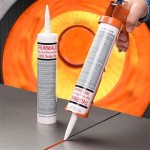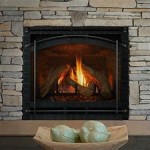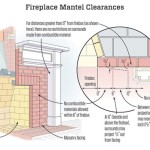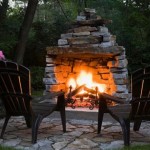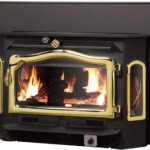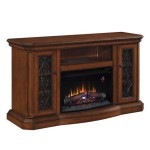Brick Fireplace Cover Up Ideas: Transforming Your Hearth
A brick fireplace can be a prominent feature in a home, contributing significantly to its architectural style and overall ambiance. However, design trends evolve, and a brick fireplace that once seemed charming might now appear dated or clash with a homeowner's current aesthetic. Covering up a brick fireplace presents an opportunity to revitalize a living space, providing a fresher, more contemporary look without the expense and disruption of completely removing the existing structure. Several methods can be employed to achieve this transformation, each with its own set of advantages and considerations.
Paint: A Simple and Budget-Friendly Solution
Painting a brick fireplace is often the most straightforward and cost-effective way to alter its appearance. This method offers a wide range of color options, allowing homeowners to customize the fireplace to match their desired decor. Before commencing the painting process, thorough preparation is paramount. The brick surface must be cleaned meticulously to remove any soot, dust, or grime. A wire brush can be used to scrub away loose mortar and debris. Following the cleaning, a masonry primer should be applied to ensure proper adhesion of the paint and to prevent the brick from absorbing excessive moisture from the paint.
The choice of paint is also crucial. Latex paint, specifically designed for masonry surfaces, is generally recommended due to its breathability and durability. Multiple coats of paint may be necessary to achieve full coverage and a uniform finish. Different paint finishes, such as matte, satin, or semi-gloss, can also be selected to further customize the fireplace's appearance. While painting offers a quick and affordable solution, it's important to note that it's a permanent alteration. Removing the paint later, if desired, can be a labor-intensive process.
Adding a Mantel and Overmantel
Even if painting the brick isn't desirable, adding a mantel and overmantel can significantly change a fireplace's look. A mantel provides a horizontal shelf above the firebox, creating a focal point and offering space for decorative items. An overmantel extends upwards from the mantel, often encompassing the entire wall above the fireplace opening. These additions can be crafted from various materials, including wood, stone, or metal, allowing for customization to suit the desired style.
The style of the mantel and overmantel should complement the overall design of the room. A rustic wood mantel can enhance a farmhouse-style aesthetic, while a sleek, modern mantel made of marble or metal can contribute to a contemporary look. The size and proportions of the mantel and overmantel should also be carefully considered to ensure they are in harmony with the scale of the fireplace and the surrounding space. Professional installation is often recommended, particularly for larger or more complex overmantel designs, to ensure structural integrity and a seamless finish.
Drywall or Paneling: Creating a Smooth, Clean Surface
For homeowners seeking a more dramatic transformation, covering the brick fireplace with drywall or paneling offers a way to create a completely smooth and uniform surface. This method involves constructing a frame around the existing brick structure and then attaching drywall or paneling to the frame. This approach effectively conceals the brick, providing a blank canvas for painting, wallpapering, or other decorative treatments.
Before installing drywall or paneling, it's essential to ensure that the framing is properly secured to the wall and that it provides adequate support for the new surface. Moisture barriers should also be considered, particularly if the fireplace is located on an exterior wall. The drywall or paneling should be carefully measured and cut to fit the frame, and all seams should be properly taped and mudded to create a seamless finish. This method offers a clean and modern look, but it does involve more extensive construction work than simply painting. Furthermore, it reduces the overall size of the room due to the added depth of the framing and covering material. Drywall is typically cheaper whereas paneling can create more of a design element.
Stone Veneer or Tile: Introducing Texture and Style
Another option for covering a brick fireplace is to apply stone veneer or tile. This method involves attaching thin slices of stone or tile to the existing brick surface, creating a visually appealing texture and adding depth to the fireplace. Stone veneer offers a wide range of styles, from natural fieldstone to manufactured stone, allowing homeowners to choose a look that complements their desired aesthetic. Tile also provides numerous design possibilities, with options ranging from classic subway tile to intricate mosaic patterns.
The installation process for stone veneer or tile typically involves applying a layer of mortar to the brick surface and then pressing the stone or tile into the mortar. Spacers are used to ensure consistent spacing between the individual pieces. Once the mortar has dried, grout is applied to fill in the gaps between the stone or tile. This method can be more labor-intensive than painting or installing drywall, but it offers a durable and visually striking finish. The added weight of the stone veneer or tile must be considered to ensure that the existing structure can support the additional load.
Fireplace Inserts and Built-ins: Adding Functionality and Design
Beyond purely cosmetic cover-ups, consider integrating a fireplace insert within the existing brick structure. Modern fireplace inserts, whether gas, electric, or wood-burning (with proper venting), can significantly increase the efficiency and heating performance of the fireplace while providing a contemporary aesthetic. The brick surround can be modified to accommodate the insert, creating a streamlined and integrated look.
Another approach is to build custom shelving or cabinets around the fireplace, creating a built-in entertainment center or a focal point for storage. These elements can be designed to complement the style of the room and to conceal the brick, either partially or entirely. Built-ins offer a practical solution for maximizing space and adding visual interest to the living area. They also present an opportunity to integrate the fireplace seamlessly into the overall design, creating a cohesive and well-ordered space.

How To Cover A Brick Fireplace With Wood Stone Nina Hendrick Home Remodel Diy

16 Red Brick Fireplace Makeover Ideas

How To Cover A Brick Fireplace With Wood Stone Nina Hendrick Home
:max_bytes(150000):strip_icc()/MadetobeaMommaBefore-5bb2476446e0fb002607ad4f.jpg?strip=all)
Before And After Fireplace Makeovers

Fireplace Remodel Diy A Facade To Cover An Old Brick Without Painting The Build

Diy Fireplace Makeover Wood Slat

Our Ugly Brick Fireplace He Vetoes Painting It Laurel Home

How To Cover A Brick Fireplace With Wood Stone Nina Hendrick Home

Antique Brick And White Molding Fireplace Makeover Maison De Pax

16 Red Brick Fireplace Makeover Ideas
Related Posts

